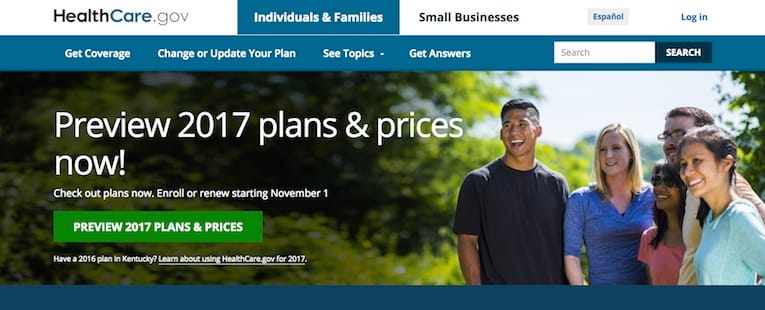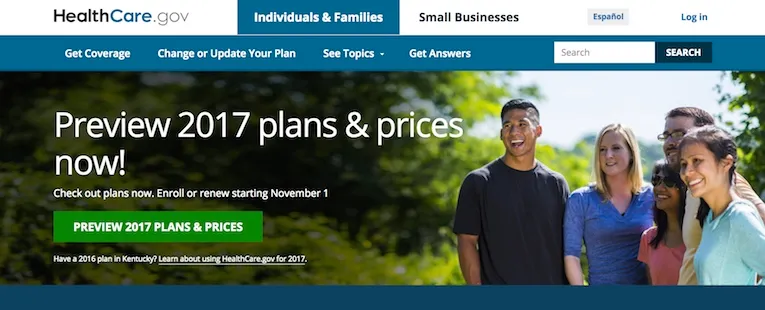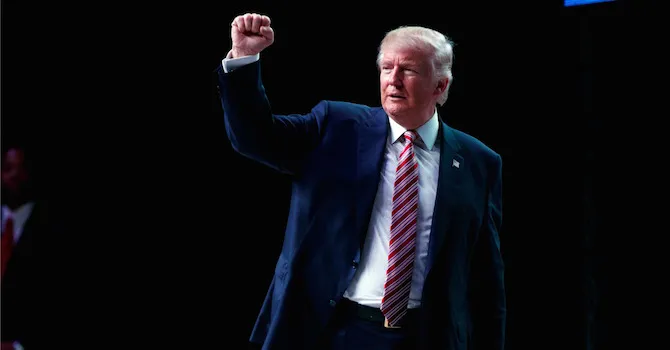
WASHINGTON — Premiums for health plans purchased through the Affordable Care Act will rise sharply next year, and insurer defections in some states will leave consumers with substantially fewer coverage options, the federal government reported.
Premiums will increase, on average, 25% for mid-level plans on the federal health insurance exchange, according to the Department of Health and Human Services (HHS). When accounting for both federal and state exchanges, premiums are forecasted to rise by an average of 22%.
The Obama administration said federal subsidies would still enable more than three-fourths of consumers to get plans for less than $100 a month.
“Millions of uninsured Americans qualify for financial assistance, and so could as many as 2.5 million Americans currently paying full price for off-marketplace coverage,” said HHS Secretary Sylvia Burwell. “I encourage anyone who might need 2017 coverage to visit HealthCare.gov and check out this year’s options for yourself.”
Senate Finance Committee chairman Orrin Hatch (R., Utah), said, however, “While the president’s allies in Washington will try to spin the numbers, families across the country will be forced to figure out how to pay for such unaffordable insurance. That Obamacare has failed to control costs comes as little surprise for those who have long warned of such results, and does little to dispel the notion we are seeing the law implode at the expense of middle-class families.”
The open enrollment period for 2017 coverage began November 1. Consumers who forgo insurance could face possible tax penalties of $700 a person or more. Larry Levitt, who tracks the health care law for the nonpartisan Kaiser Family Foundation, predicted a “tumultuous” sign-up period.
The 25% hike would be up from a 2% rise in 2015 and a 7% increase this year. Major insurers have withdrawn from exchanges in many states, citing multimillion-dollar losses, and state officials have authorized rate hikes of 25% to 50% or more for some remaining insurers.
About one in five consumers going to HealthCare.gov will find only one insurer with 2017 plans, the administration said.
Enrollment by healthy young adults is seen as being integral to the ACA’s viability. For a 27-year-old, the average monthly premium for a benchmark plan next year would be $302, up from $242 in 2016, according to HHS.
“Low enrollment has been a major factor contributing to escalating exchange premiums,” said Caroline Pearson, senior vice president at Avalere Health. “In 2014, when the exchanges began, high-need enrollees flocked to the program. Since then, subsidies and mandate penalties have not driven enough participation among younger, healthier individuals. If 2017 enrollment growth is small, as expected, it will perpetuate market instability.”
The White House downplayed the concern. Officials said people could cut costs with income-based subsidies in the form of tax credits and by switching to less expensive plans. While some markets will have limited choices, consumers nationwide will see an average of 10 plans per insurer, they said.
The administration projected monthly enrollment in the ACA exchanges to average 11.4 million in 2017, up from 10.5 million this year. But 5 million to 7 million people who buy insurance on their own do not receive federal subsidies.
While millions have gained coverage under ACA and the nation’s uninsured rate has fallen to a record low, an estimated 27 million under age 65 remain uninsured. A new Kaiser Family Foundation analysis estimates that 11.7 million people who remain without health insurance are eligible for Medicaid in their state or for tax credits to purchase insurance through their state’s exchange.
The 15.5 million other people who remain without insurance are likely ineligible for either Medicaid or tax credits due to income, immigration status or availability of employer coverage. This includes 2.6 million poor adults — about one in 10 nonelderly uninsured people — who fall into a “coverage gap” in the 19 states that have not implemented ACA’s Medicaid expansion.
These individuals would become eligible for Medicaid if their state were to expand its Medicaid program as the ACA envisioned, but otherwise are likely to remain uninsured as they make too little money to qualify for marketplace tax credits and lack any other affordable coverage options.
Responding to the projected premium increases, Republican presidential candidate Donald Trump said, “It’s over for Obamacare.” He said his Democratic rival, Hillary Clinton, “wants to double down and make it more expensive and it’s not gonna work. … Our country can’t afford it, you can’t afford it.” He vowed that his own plan would deliver “great health care at a fraction of the cost.”
“The rates are going through the sky,” Trump said at another campaign rally. “Repealing Obamacare and stopping Hillary’s health care takeover is one of the single most important reasons that we must win on November 8.”
Clinton said she was intent on making “changes to fix problems” in the law. She has said the federal government should be able to block or modify unreasonable rate increases, while calling for retaining what she says have been the law’s benefits.
Obama said last month, “Repeal is not the answer.” He told college students, “When one of these companies comes out with a new smartphone and it has a few bugs, what do they do? They fix it, they upgrade. Unless it catches fire … But you don’t go back to using a rotary phone. You don’t say, ‘We’re repealing smartphones.’ ”
“Part of the problem is that a Democratic president named Barack Obama wrote the law,” he added.







